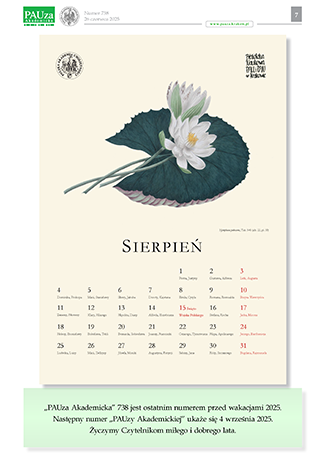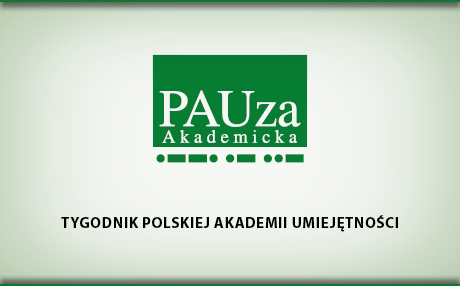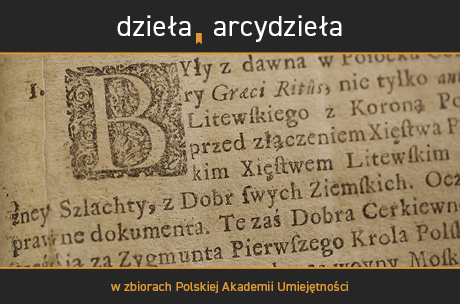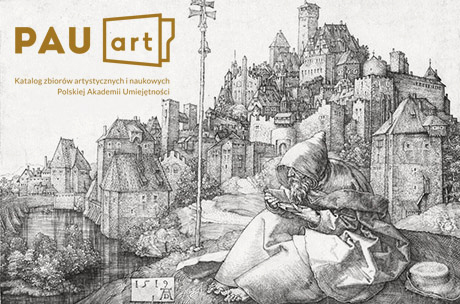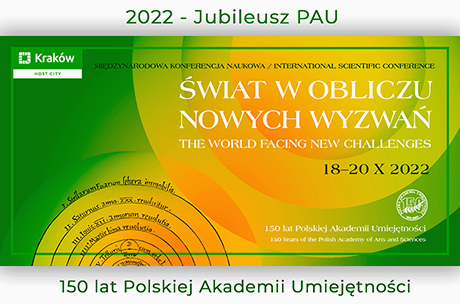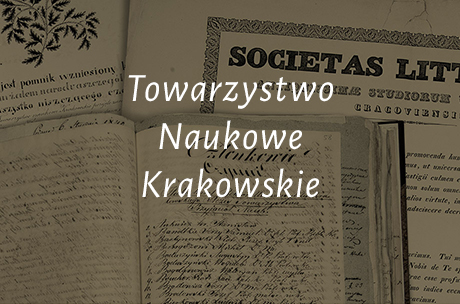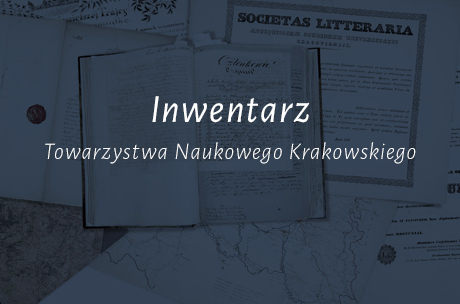Ethical and legal issues
Ethical and legal issues: Counteracting ghostwriting, guest authorship or honorary authorship as well as irregularities regarding citations: plagiarism, and the Matthew effect
By submitting a manuscript for publication in the journal, the author declares that he or she is the author of the text and that he or she has the (exclusive) personal and property copyright to this text. Should the manuscript for publication be prepared by several authors, the person submitting it will (a) declare that the persons listed as authors are entitled to moral as well as economic rights to the text, and (b) specify the contribution of each author to the text (the person submitting the text is responsible for accuracy of the information).
The Editorial Committee will strongly oppose any attempts at ghostwriting, guest authorship and honorary authorship as well as concealing real sources used for the preparation of one’s manuscript, as such actions violate the elementary ethical principles of the academic community.
Ghostwriting is understood as a situation when a person made a significant contribution to the publication but their role remains concealed, i.e. they are not named either among (a) the authors or (b) in the acknowledgments section of the said publication.
Guest authorship or honorary authorship is understood as a situation when a person is named as an author or a co-author of the publication, but their actual contribution to the publication was next to none or none at all.
Concealing actual sources used to prepare the texts for publication is understood either as (a) all types of plagiarism (both explicit and implicit – see Zenderowski 2008), or as (b) failing to quote the correct publications and quoting instead authors who are more likely to draw attention (according to the Matthew effect – see Merton 1968; 1988; 1995; Strevens 2006).
Should such practices be revealed (and cannot be amended in editing), the Editorial Committee of the journal:
a) will deny publishing such manuscript in the journal and will inform about the misconduct the scientific institution(s) employing the author, as well as other scientific centers, journals and – in case of Polish authors – the Ethics in Science Committee of the Polish Academy of Sciences;
b) if the manuscript has been published in the journal, will make an appropriate announcement in the next volume of the journal and will inform about the misconduct the scientific institution(s) employing the author, as well as other scientific centers, journals and – in case of Polish authors – the Ethics in Science Committee of the Polish Academy of Sciences;
Moreover, in order to promote high ethical standards in science, the Editors of the journal refer to three studies: Ministerstwo Nauki i Szkolnictwa Wyższego 2011; Komisja do spraw etyki w nauce PAN 2012; Committee on Publication Ethics 2015.
BIBLIOGRAPHY
COMMITTEE ON PUBLICATION ETHICS
2015: COPE flowcharts. Available online: http://publicationethics.org/files/Full%20set%20of%20flowcharts_0.pdf (retrieved: 19.10.2016).
ETHICS IN SCIENCE COMMISSION, PAN
2012: Kodeks etyki pracownika naukowego [The code of ethics for scientific researchers]. Warsaw: Komisja do spraw etyki w nauce PAN. Available online (in Polish): http://www.instytucja.pan.pl/images/stories/pliki/Komisja_ds_Etyki_Nauce/dokumenty/Kodeks_etyki_pracownika_naukowego_31.12._2012.pdf (retrieved: 29.11.2014).
MERTON Robert K.
1968: The Matthew Effect in Science, Science 159 (3810), pp. 56–63; Robert K. Merton 1910-2003, Garfield Library. Available online: http://garfield.library.upenn.edu/merton/matthew1.pdf (retrieved: 29.11.2014).
1988: The Matthew Effect in Science, II. Cumulative Advantage and the Symbolism of Intellectual Property, ISIS 79, pp. 606–623; Robert K. Merton 1910–2003, Garfield Library. Available online: http://garfield.library.upenn.edu/merton/matthewii.pdf (retrieved: 29.11.2014).
1995: The Thomas Theorem and The Matthew Effect, Social Forces 74(2), pp. 379–424; Robert K. Merton 1910-2003, Garfield Library. Available online: http://garfield.library.upenn.edu/merton/thomastheorem.pdf (retrieved: 29.11.2014).
MINISTERSTWO NAUKI I SZKOLNICTWA WYŻSZEGO
2011: Rzetelność w badaniach naukowych oraz poszanowanie własności intelektualnej. Warsaw: Ministerstwo Nauki i Szkolnictwa Wyższego. Available online (in Polish): http://bbn.uksw.edu.pl/sites/default/files/rzetelnosc_broszura_fin_low.pdf (retrieved: 29.11.2014).
STREVENS Michael
2006: The Role of the Matthew Effect in Science, Studies in History and Philosophy of Science 37(2), pp. 159–170; Michael Strevens — strona domowa. Available online: http://www.strevens.org/research/scistruc/Matthew.pdf (retrieved: 29.11.2014).
ZENDEROWSKI Radosław
2008: Plagiat. Istota – rodzaje – skutki (w odniesieniu do prac pisemnych na studiach wyższych) [Plagiarism: its nature, typology and consequences in written assignments at university studies]; Warsaw: Instytut Politologii Uniwersytet Kard. Stefana Wyszyńskiego w Warszawie. Available online (in Polish): http://www.zenderowski.republika.pl/plagiat.pdf (retrieved: 29.11.2014).
Counteracting erroneous interpretations of bibliometrics
Counteracting erroneous interpretations of bibliometrics
With reference to the research traditions in the Science of Science, the Editorial Committee fully support the current criticism of bibliometrics, mistakenly identified with scientometrics by science administrators around the world (cf. Cool et al. 2009; San Francisco Declaration On Research Assessment (DORA) 2012; Hicks et al. 2015; Werner 2015).
In particular, the Editorial Committee fully share the view of the 74 editors representing 56 leading journals in the history of science, technology and medicine that:
“Great research may be published anywhere and in any language. Truly ground-breaking work may be more likely to appear from marginal, dissident or unexpected sources, rather than from a well-established and entrenched mainstream” (Cool et al. 2009, p. 2).
Therefore, the pages of the journal are open to the reliable analyzes of the bibliometric methods in the light of the science of science and the science studies, particularly with regard to the history of science and the history of the exact sciences (cf. About the journal, The scope of the journal).
BIBLIOGRAPHY
COOK Hal et al. [total of 74 editors representing 56 leading journals in the history of science, technology and medicine]
2009: Journals under Threat: A Joint Response from History of Science, Technology and Medicine Editors, Medical History 53(1), pp. 1–4. Available online:
http://www.ncbi.nlm.nih.gov/pmc/articles/PMC2629173/ (29.11.2014);
http://www.ncbi.nlm.nih.gov/pmc/articles/PMC2629173/pdf/medhis5301-00a-01.pdf (29.11.2014).
HICKS Diana, WOUTERS Paul, WALTMAN Ludo, de RIJCKE Sarah, RAFOLS Ismael
2015: Bibliometrics: The Leiden Manifesto for research metrics. Nature 520(7548), pp. 429–431 (23 April 2015).
Available online:
http://www.nature.com/polopoly_fs/1.17351!/menu/main/topColumns/topLeftColumn/pdf/520429a.pdf;
http://www.nature.com/news/bibliometrics-the-leiden-manifesto-for-research-metrics-1.17351.
THE AMERICAN SOCIETY FOR CELL BIOLOGY (ASCB) (together with a group of editors and publishers of scholarly journals)
2012: SAN FRANCISCO DORA DECLARATION ON RESEARCH ASSESSMENT. Available online:
http://am.ascb.org/dora/; http://www.ascb.org/dora-old/files/SFDeclarationFINAL.pdf.
WERNER Reinhard
2015: The focus on bibliometrics makes papers less useful. Nature 517 (7534), p. 245 (15 JANUARY 2015).
Available online: http://www.nature.com/doifinder/10.1038/517245a;
http://www.nature.com/news/the-focus-on-bibliometrics-makes-papers-less-useful-1.16706.
Dissemination and free access
Dissemination and free access
The Editorial Committee shares the opinion that open and free access to scientific publications is conducive to the dissemination of knowledge on a global scale.
For that reason, since 2013, the Proceedings of the PAU Commission on the History of Science has been a peer-reviewed journal with open access. It assumes the so-called diamond open access model, ie. an open and free access without embargo time.
BIBLIOGRAPHY
FUCHS Christian, SANDOVAL Marisol
2013: The diamond model of open access publishing: Why policy makers, scholars, universities, libraries, labour unions and the publishing world need to take noncommercial, non-profit open access serious. TripleC: Communication, Capitalism & Critique 11(2), pp. 428–443. Available online: http://openaccess.city.ac.uk/id/eprint/3078.
Archives
Archives
The full archive of the journal of the Commission on the History of Science of the Polish Academy of Sciences is listed below. It contains all volumes: from the first volume of the journal published in 1999 to the current volume of the journal.
Studia Historiae Scientiarum | e-ISSN: 2543-702X | p-ISSN: 2451-3202.
The first volume under this title was issued as volume 15 (2016).
The volumes: 15 (2016) – current volume are available online at https://ojs.ejournals.eu/SHS/issue/archive.
Volume 15 (2016) license: CC-BY-NC-ND 3.0; form volume 16 (2017) to 19 (2020) license: CC-BY-NC-ND 4.0.; volume 20 (2021) license: CC-BY-NC-ND 4.0 or CC-BY 4.0.; from volume 21(2022) license: CC-BY 4.0 or higher excluding illustrations, which may be licensed differently.
The previous volumes were published under the titles:
Prace Komisji Historii Nauki PAU – print ISSN: 1731-6715, (from 2013) electronic ISSN: 2392-1749; volumes 9 (2009) – 14 (2015).
Prace Komisji Historii Nauki Polskiej Akademii Umiejętności – (from 1999) print ISSN: 1731-6715; volumes 1 (1999) – 8 (2007).
Volume 14 (2015) is available online at https://ojs.ejournals.eu/PKHN-PAU. License: CC-BY-NC-ND 3.0.
All volumes from 1 (1999) to the current volume are available online at http://pau.krakow.pl/index.php/en/publications/scientific-journals/proceedings-of-the-pau-commission-on-the-history-of-science/archives.
License from volume 1 (1999) to 12 (2013): Fair use.
License from volume 13 (2014) to volume 15 (2019): CC-BY-NC-ND 3.0.
License from volume 16 (2017) to 19 (2020): CC-BY-NC-ND 4.0.
License for volume 20 (2021): CC-BY-NC-ND 4.0 or CC-BY 4.0.
License from volume 21(2022): CC-BY 4.0 or higher (excluding illustrations, which may be licensed differently).
See also the full list of articles published in the journal from 1999, using: Author Index and Thematic Index.
Note:
Prace Komisji Historii Medycyny i Nauk Przyrodniczo-Matematycznych / Polska Akademia Umiejętności was the predecessor of this journal. The following issues were published: vol. 1 (1939), vol. 2 (1949), vol. 3.1–3.2 (1949), vol. 3.3 (1950), vol. 4.1–4.2 (1952), vol. 3.4 (1953) [already after the activities of the Polish Academy of Arts and Sciences were suspended in 1952].
Volume XIX
Edited by Michał Kokowski
Kraków 2020

Volume XVIII
Edited by Michał Kokowski
Kraków 2019

Volume XVII
Edited by Michał Kokowski
Kraków 2018

Volume XVI
Edited by Michał Kokowski
Kraków 2017

Volume XV
Edited by Michał Kokowski
Kraków 2016

Volume XIV
Edited by Michał Kokowski
Kraków 2015

Volume XIII
Edited by Michał Kokowski
Kraków 2014

Volume XII
Edited by Michał Kokowski
Kraków 2013

Volume XI
Edited by Andrzej M. Kobos
Kraków 2012

Volume X
Edited by Andrzej Pelczar
Kraków 2010

Volume IX
Edited by Adam Strzałkowski
Kraków 2009

Volume VIII
Edited by Adam Strzałkowski
Kraków 2007
Volume VII
Edited by Adam Strzałkowski
Kraków 2006
Volume VI
Edited by Adam Strzałkowski
Kraków 2004
Volume V
Edited by Adam Strzałkowski
Kraków 2003
Volume IV
Edited by Adam Strzałkowski
Kraków 2002
Volume III
Edited by Adam Strzałkowski
Kraków 2001
Volume II
Edited by Adam Strzałkowski
Kraków 2000
Volume I
Edited by Adam Strzałkowski
Kraków 1999
Copyright and fair use
Copyright and fair use
The journal complies with the Polish and the international copyright law.
The content of the journal is available under the Creative Commons Attribution-Noncommercial-No derivative works 3.0 Unported (CC-BY-NC-ND 3.0) license. (http://creativecommons.org/licenses/by-nc-nd/3.0/legalcode).
![]()
Human-readable summary of the license: https://creativecommons.org/licenses/by-nc-nd/3.0/.
Full text of the license: https://creativecommons.org/licenses/by-nc-nd/3.0/legalcode.
In other words, the users of this website can use the materials published on this website free of charge as long as they meet the following requirements:
(a) ![]() “BY” – they acknowledge the authorship of the materials (i.e. they will not assign the authorship to themselves);
“BY” – they acknowledge the authorship of the materials (i.e. they will not assign the authorship to themselves);
(b) ![]() “NC” – they will use the materials only for non-commercial purposes (i.e. they will not use them for commercial purposes without the consent of the Author(s) and the Editors);
“NC” – they will use the materials only for non-commercial purposes (i.e. they will not use them for commercial purposes without the consent of the Author(s) and the Editors);
(c) ![]() “ND” – they will not create derivative materials (i.e. they will not modify the materials or use them as basis for their own works without due regard for the rights of the Author(s) of the original works and the Editors).
“ND” – they will not create derivative materials (i.e. they will not modify the materials or use them as basis for their own works without due regard for the rights of the Author(s) of the original works and the Editors).
Fair use of the texts published by the journal includes: non-commercial private use for the purpose of research, teaching, commenting, criticizing, quoting, paraphrasing, informing and archiving with due regard for the current copyright law and with detailed bibliographic information of such publications.
The authors who would like to have their texts published in the journal reprinted should apply to the Editors for written approval of such reprint (free of charge). They are also required to include complete bibliographic information of the original publication in the reprint.







